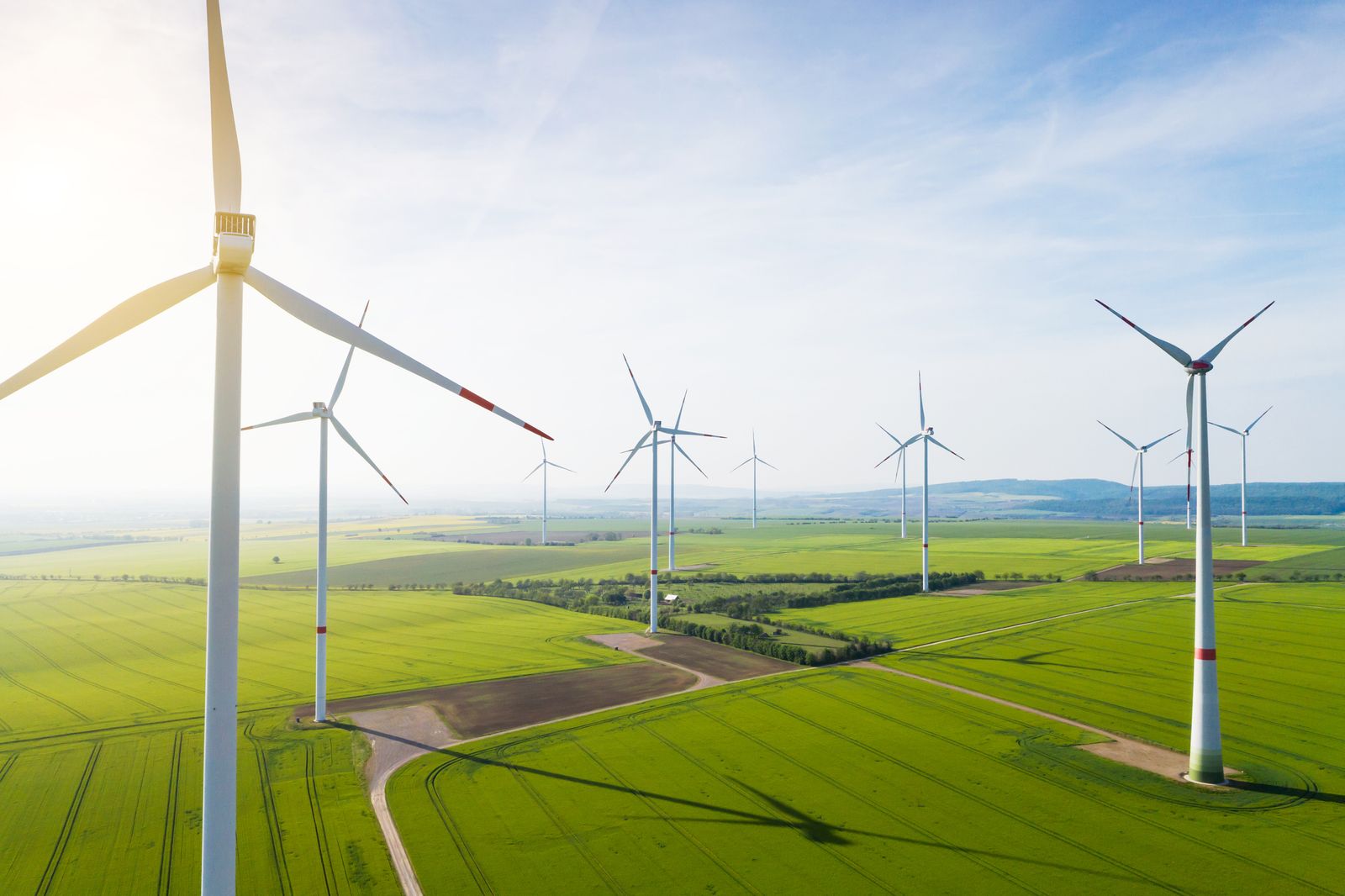Harnessing the Wind: Global Wind Turbine Market to Surpass USD 325.6 Billion by 2034
Wind energy is a key solution for sustainable energy and reducing carbon emissions. The global wind turbine market is expected to exceed USD 325.6 billion by 2034, driven by technology and supportive policies.

In the race toward a greener future, wind energy is emerging as one of the most powerful and sustainable solutions for addressing the world's rising energy demands and reducing carbon emissions. According to recent industry insights, the global wind turbine market is poised to exceed USD 325.6 billion by 2034, reflecting a steady compound annual growth rate (CAGR) driven by technological advancements, supportive regulatory frameworks, and the global push toward clean energy. This article delves into the key growth drivers, regional dynamics, market challenges, and future outlook of the wind turbine market.
The Rising Demand for Wind Energy
Wind turbines convert kinetic energy from wind into mechanical power, which is then transformed into electricity. As governments and industries increasingly prioritize energy diversification and sustainability, wind power has moved from the periphery to the center of global energy policies. Nations are setting ambitious targets to reduce reliance on fossil fuels and decarbonize their energy grids, thereby creating significant opportunities for wind turbine deployment.
In 2024 alone, the market was estimated to be worth over USD 120 billion, and the projected growth to USD 325.6 billion by 2034 highlights the sector’s enormous potential. This momentum is underpinned by both onshore and offshore wind developments and by the increasing cost-effectiveness of wind energy compared to conventional sources.
Key Market Drivers
1. Government Policies and Incentives
Governments across the globe are providing subsidies, tax incentives, and policy support to encourage the installation of wind turbines. Legislation such as the Inflation Reduction Act in the U.S., Europe’s Green Deal, and India’s Renewable Energy Mission are paving the way for major investments in wind energy.
2. Technological Advancements
Innovation in turbine design, materials, and digital monitoring has significantly improved turbine efficiency and durability. Larger rotor diameters, improved blade designs, and floating wind turbines for deepwater deployment are opening new possibilities, especially for offshore projects.
3.Corporate Sustainability Goals
Major corporations are committing to renewable energy procurement as part of their Environmental, Social, and Governance (ESG) goals. This trend is driving demand for power purchase agreements (PPAs) with wind energy providers, thereby fueling investment in new turbine installations.
4.Grid Modernization and Energy Storage
The integration of wind power into national grids is becoming more viable thanks to improved transmission infrastructure and advancements in energy storage systems, allowing for better management of intermittency issues and more stable energy supply.
Onshore vs. Offshore Wind: Growth Segments
Onshore Wind Turbines
Currently dominating the market, onshore turbines are easier and more economical to install and maintain. Regions with vast land resources, such as North America, China, and India, are seeing significant investments in onshore wind farms.
Offshore Wind Turbines
Although more capital-intensive, offshore turbines offer higher capacity factors due to stronger and more consistent wind speeds at sea. Europe, particularly the UK and Germany, leads the way in offshore installations, with emerging activity in the U.S., China, and Japan. Floating wind farms are a game-changer, enabling access to deeper waters and broader deployment opportunities.
Regional Insights
1.Europe
Europe remains a global leader in wind energy adoption, bolstered by strict emission targets and well-established offshore infrastructure. Countries like Germany, Denmark, and the UK are pioneers in wind technology and policy frameworks.
2.Asia-Pacific
China holds the largest share of the global wind turbine market, driven by aggressive renewable energy policies and massive domestic demand. India is also scaling up its wind capacity through favorable policy support and growing investor interest.
3.North America
The U.S. is experiencing a renaissance in wind energy, particularly in the Midwest and Texas for onshore projects and the Atlantic coast for offshore developments. Supportive policies at both federal and state levels are accelerating the pace of new installations.
4.Latin America and Africa
These regions are slowly emerging as untapped opportunities. Countries like Brazil, Chile, and South Africa are investing in wind energy to address power shortages and transition toward greener energy systems.
Challenges in the Wind Turbine Market
Despite strong growth prospects, the market faces several challenges:
High Initial Investment
While wind power is cost-effective in the long run, the upfront capital required for turbine manufacturing, transportation, and installation remains a barrier for some economies.
Supply Chain Disruptions
Global supply chain issues, often exacerbated by geopolitical tensions and raw material shortages, can delay projects and increase costs.
Land and Environmental Concerns
Onshore wind projects sometimes face opposition due to land use conflicts and perceived impacts on wildlife and local ecosystems.
Grid Integration Issues
Efficient integration of wind energy into aging grid infrastructures continues to be a technical and regulatory hurdle in many countries.
Future Outlook and Innovations
Looking ahead, the wind turbine market is expected to witness several transformative shifts:
Smart Turbines
The integration of AI, IoT, and predictive maintenance solutions will enhance turbine performance and reduce operational costs.
Repowering Existing Farms
Older wind farms are being repowered with modern turbines that have greater efficiency and capacity, offering a sustainable approach to increasing output without expanding land use.
Hybrid Renewable Projects
Combining wind with solar or energy storage systems is gaining traction to ensure round-the-clock renewable energy availability.
Localized Manufacturing
To reduce dependency on international supply chains, several nations are promoting local manufacturing hubs for turbine components, which may help cut costs and create jobs.
Conclusion
The wind turbine market is entering a dynamic growth phase as the world accelerates its transition toward renewable energy. With projected revenues set to surpass USD 325.6 billion by 2034, the market presents enormous potential for investors, policymakers, and technology providers alike. However, strategic planning, technological innovation, and supportive governance will be crucial to overcome existing challenges and ensure a sustainable and resilient wind energy future.
In this era of climate urgency, wind power stands tall—literally and figuratively—as a beacon of clean, scalable, and economically viable energy. The future is blowing in the wind.
Source: https://www.gminsights.com/industry-analysis/wind-turbine-market


